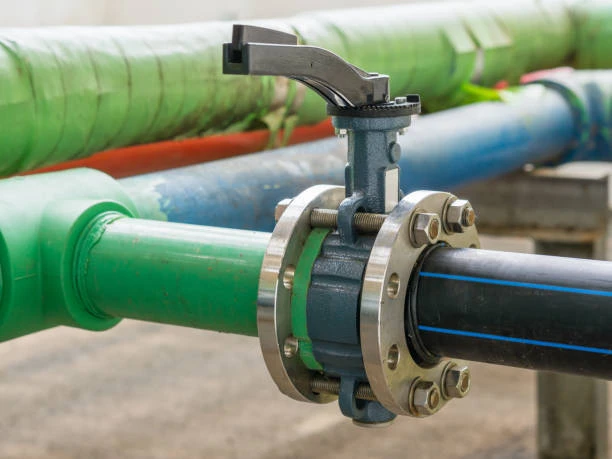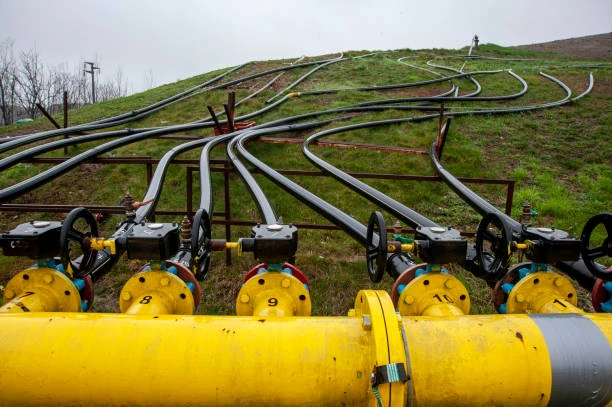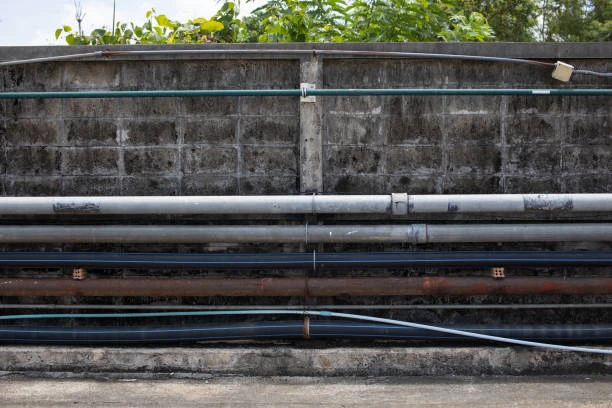Introduction
High-Density Polyethylene HDPE pipe are renowned for their strength, flexibility, and resistance to various chemicals. They are widely used in water distribution, gas lines, and sewer systems. One of the most effective methods for joining HDPE pipes is butt fusion, which creates a seamless, durable joint. However, the cooling phase of this process is often overlooked, despite its critical impact on efficiency, cost, and joint integrity. In this article, we will explore optimized cooling procedures for HDPE pipe butt fusion and how they can save time and money in the field.

Understanding HDPE Pipe Butt Fusion
HDPE pipe What is Butt Fusion?
Butt fusion is a welding technique used to join HDPE pipes. The ends of two pipes are heated until they melt, and then they are pressed together to form a strong bond. This method is favored for its simplicity and effectiveness, making it ideal for various applications in the construction and utilities sectors.
Importance of HDPE pipe the Cooling Phase
After the pipes are fused, they must cool to solidify the joint. The cooling phase is crucial; if not managed correctly, it can lead to joint failures and increased project delays. Optimizing this phase can significantly enhance operational efficiency and reduce costs.
HDPE pipe Factors Influencing Cooling Time
Several factors affect the cooling time of HDPE pipes after butt fusion:
1. Pipe Thickness
Thicker HDPE pipes retain heat longer than thinner ones, resulting in extended cooling times. Understanding the thickness of the pipes being joined is essential for predicting cooling durations accurately.
2. Ambient Temperature
The temperature of the surrounding environment plays a significant role in cooling rates. Higher ambient temperatures may decrease cooling time, while colder conditions can prolong it. This variability necessitates adaptable cooling strategies.
3. Joint Configuration
The configuration of the joint—such as pipe diameter and alignment—affects heat dissipation. Joints that promote better airflow around the fusion area will cool more efficiently.
4. Humidity Levels
High humidity can slow down the cooling process. Conversely, dry conditions may enhance cooling efficiency. Being aware of weather conditions can help in planning cooling procedures effectively.
HDPE pipe Optimized Cooling Procedures
1. Use of Cooling Jackets
Cooling jackets are specialized equipment designed to encase the joint, maintaining optimal temperatures during the cooling process. They significantly reduce cooling times and help ensure consistent cooling rates, preventing thermal stress that could compromise joint integrity.
2. Water Cooling Techniques
Incorporating water cooling techniques, such as spraying or soaking the fused joint, can accelerate the cooling process. It is crucial, however, to control the water temperature to avoid shocking the material, which could lead to fractures or weak joints.
3. Controlled Airflow
Enhancing airflow around the joint using fans or blowers can expedite cooling. Positioning fans to direct airflow at the joint area promotes even heat dissipation, which can significantly shorten cooling times.
4. Temperature Monitoring
Implementing real-time temperature monitoring can provide valuable insights into the cooling process. Knowing the exact temperature of the joint helps operators determine when it is safe to handle and proceed with subsequent construction activities.
5. Proper Equipment Maintenance
Ensuring that butt fusion equipment is well-maintained is vital for operational efficiency. Regular checks and servicing will help keep machinery in optimal condition, contributing to faster cooling and improved joint quality.
Benefits of HDPE pipe Optimized Cooling Procedures
Time Savings
By streamlining the cooling process, contractors can significantly reduce the overall time required for butt fusion operations. This efficiency not only enhances project timelines but also minimizes labor costs.
Cost Savings
Optimized cooling procedures translate into financial savings. Reducing the cooling time allows for quicker transitions to subsequent tasks, ultimately leading to lower operational costs.
Enhanced Joint Integrity
Proper cooling techniques help maintain the integrity of the fusion joint. By minimizing thermal stress and ensuring uniform cooling, the risk of joint failure is drastically reduced, resulting in more reliable installations.
Improved Worker Safety
Reducing cooling times minimizes the time workers spend in potentially hazardous conditions. This enhances overall job site safety and worker well-being.
Environmental Benefits
Efficient cooling processes can lead to reduced energy consumption and waste, contributing to more sustainable construction practices.
Conclusion
Optimizing cooling procedures for HDPE pipe butt fusion is crucial for enhancing efficiency and reducing costs in the field. By implementing advanced techniques such as cooling jackets, water cooling, controlled airflow, temperature monitoring, and proper equipment maintenance, contractors can improve the quality of their joints and streamline operations. As demand for HDPE piping solutions continues to grow, adopting these optimized cooling practices will be essential for remaining competitive in the industry.
Frequently Asked Questions HDPE pipe (FAQs)
1. What is the typical cooling time for HDPE pipe butt fusion?
Cooling time can vary based on pipe thickness and ambient conditions but generally ranges from 15 minutes to an hour.
2. Can water cooling techniques damage HDPE pipe?
If managed correctly, water cooling can enhance the cooling process. However, sudden temperature changes should be avoided to prevent material stress.
3. How do I know when the joint is safe to handle?
Using temperature monitoring devices can help determine when the joint has cooled to a safe handling temperature.
4. What are the consequences of inadequate cooling?
Inadequate cooling can lead to joint failure, which may result in leaks and increased maintenance costs.
5. How can I ensure my butt fusion equipment remains efficient?
Regular maintenance, including inspections and timely repairs, will help keep your fusion equipment operating at peak efficiency.

















